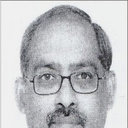Prevalence and risk factors for vitamin C deficiency in north and south India: a two centre population based study in people aged 60 years and over.
Avainsanat
Abstrakti
BACKGROUND
Studies from the UK and North America have reported vitamin C deficiency in around 1 in 5 men and 1 in 9 women in low income groups. There are few data on vitamin C deficiency in resource poor countries.
OBJECTIVE
To investigate the prevalence of vitamin C deficiency in India.
METHODS
We carried out a population-based cross-sectional survey in two areas of north and south India. Randomly sampled clusters were enumerated to identify people aged 60 and over. Participants (75% response rate) were interviewed for tobacco, alcohol, cooking fuel use, 24 hour diet recall and underwent anthropometry and blood collection. Vitamin C was measured using an enzyme-based assay in plasma stabilized with metaphosphoric acid. We categorised vitamin C status as deficient (<11 µmol/L), sub-optimal (11-28 µmol/L) and adequate (>28 µmol/L). We investigated factors associated with vitamin C deficiency using multivariable Poisson regression.
RESULTS
The age, sex and season standardized prevalence of vitamin C deficiency was 73.9% (95% confidence Interval, CI 70.4,77.5) in 2668 people in north India and 45.7% (95% CI 42.5,48.9) in 2970 from south India. Only 10.8% in the north and 25.9% in the south met the criteria for adequate levels. Vitamin C deficiency varied by season, and was more prevalent in men, with increasing age, users of tobacco and biomass fuels, in those with anthropometric indicators of poor nutrition and with lower intakes of dietary vitamin C.
CONCLUSIONS
In poor communities, such as in our study, consideration needs to be given to measures to improve the consumption of vitamin C rich foods and to discourage the use of tobacco.


